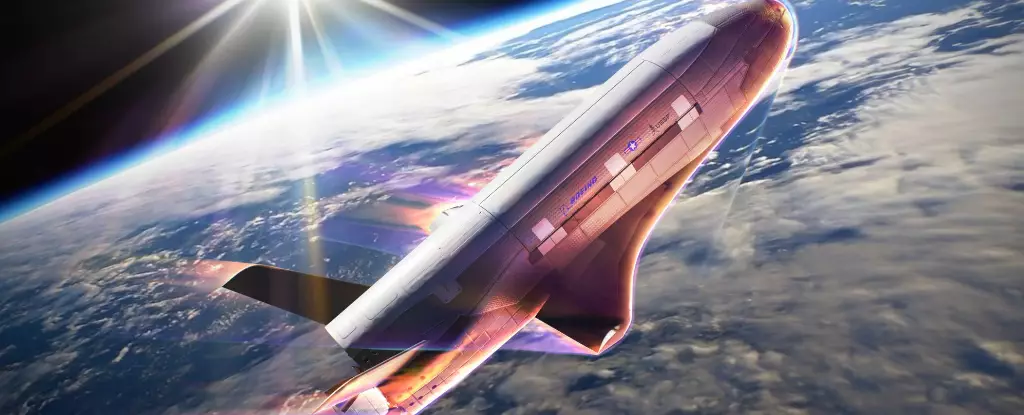Since its debut in 2011, the X-37B Orbital Test Vehicle (OTV) has captivated the imagination of space enthusiasts and defense analysts alike. Developed by Boeing and managed by the United States Space Force (USSF), this state-of-the-art space plane represents a significant leap forward in aerospace technology. Capable of conducting missions at altitudes ranging from 240 to 800 kilometers (approximately 150 to 500 miles) above the Earth’s surface, the X-37B is designed to test various reusable vehicle technologies that may pave the way for ambitious long-term objectives in space exploration.
As we now stand at the threshold of a new chapter in the X-37B’s operational history, the initiation of its seventh mission (OTV-7) on December 29, 2023, marks a pivotal moment. This mission aims not only to further our understanding of the effects of space radiation but also to enhance the realm of Space Domain Awareness (SDA) technologies. The capability to monitor and analyze the space environment has become increasingly critical in an era marked by growing competition and potential conflict in space.
A highlight of this latest mission is the X-37B’s planned execution of a groundbreaking aerobraking maneuver, during which the vehicle will make a brief contact with the upper layers of the Earth’s atmosphere. This technique enables the spacecraft to reduce its orbital velocity while conserving fuel, effectively changing its trajectory without the need for additional propulsion. The implications of this maneuver are profound: for the first time, the X-37B can conduct low-altitude passes over targeted areas, all while remaining undetected by adversarial entities.
This ingenuity wouldn’t be possible without an array of historical data and the accumulated wisdom from earlier space missions. In particular, the X-37B’s aerobraking capabilities find their roots in established practices from missions such as the Mars Global Surveyor and Mars Odyssey, which adeptly utilized similar techniques to navigate the complexities of planetary atmospheres. With the U.S. Space Force leveraging decades of experience, the success of these maneuvers serves as a testament not only to technological advancement but also to strategic military foresight.
Securing National Interests Amid Rising Tensions
At a time when global geopolitical tensions have escalated dramatically, the need for innovative defense solutions has never been more pressing. The secrecy enveloping the X-37B has sparked considerable speculation about its capabilities and intentions. Statements from defense officials, including Secretary of the Air Force Frank Kendall and Chief of Space Operations Gen. Chance Saltzman, underscore the vehicle’s role in maintaining America’s strategic edge in extraterrestrial operations. The X-37B is not merely a tool for conducting experiments; it symbolizes the US’s heightened commitment to safeguarding national interests in an increasingly militarized space domain.
In previous discussions, former U.S. Air Force Secretary Heather Wilson articulated how the X-37B’s unique orbital patterns defy the predictions of adversaries, who find it challenging to track the vehicle’s movements. Such an advantage may not only serve to enhance mission efficacy but also to sow confusion among potential threats. These insights illustrate how technological innovation translates directly into tactical superiority.
As the X-37B embarks on its eighth mission, the breadth of its experimentation agenda continues to expand. Among the tasks planned for OTV-7 are the testing of novel SDA technologies and examining the effects of radiation on biological specimens, including seeds provided by NASA—part of the experimental “Seeds-2” initiative. The data gathered will not only be critical in advancing our understanding of how life can adapt in outer space but may also have implications for future agricultural endeavors on other planetary bodies.
Moreover, as part of an ongoing commitment to responsible space exploration, the X-37B will release some of its service module components following established space debris mitigation protocols. This initiative reflects an increasing awareness within the USSF about the long-term sustainability of space environments, which is key in fostering international cooperation in an otherwise contentious arena.
As the X-37B continues to navigate uncharted territories in space experimentation and military strategy, its capacity to adapt and evolve ensures its relevance amidst the rapid technological advancements of the 21st century. While the exact capabilities of this enigmatic vehicle remain classified, the mere fact that it is capturing the attention of adversaries conveys its crucial role in shaping the future of space operations.
The success of OTV-7 promises to redefine our understanding of space capabilities, offering a glimpse into a future where military and exploratory missions coalesce to forge new paths in human achievement. As we move forward, one thing becomes clear: the X-37B is not just a vessel; it is a harbinger of what lies ahead in our journey through the cosmos.

